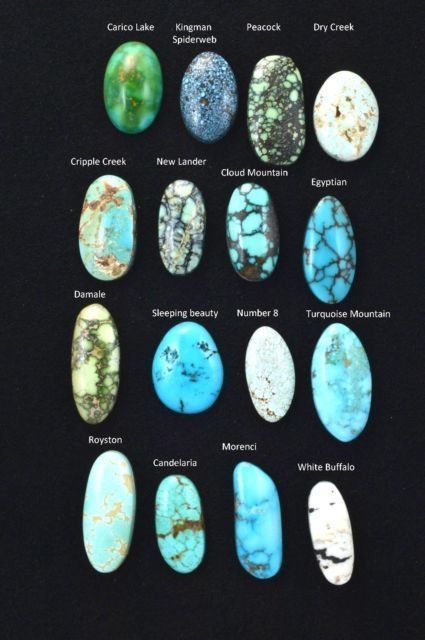
Types of turquoise
Contents:
Often, when choosing jewelry with turquoise, the buyer is faced with the question: “Why, with equivalent indicators, the cost of the stone is completely different?”. The thing is that there are several types of minerals that have completely different origins. As a rule, the tag must indicate what type a particular gem belongs to. In this case, the seller must have the appropriate certificates and documents. In order to understand at least a little what you can deal with, we suggest that you consider what kind of turquoise is and the distinctive characteristics of each of the species.
What is turquoise?
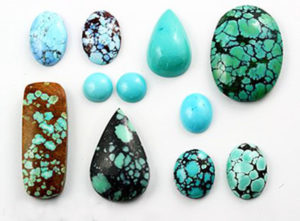
Today, even in eminent jewelry stores, you can find different turquoise. Why is this happening? The fact is that turquoise has always been distinguished by ease of processing, even taking into account the fact that working with a stone is not very easy. A very neat and painstaking work is carried out on the gem, which is aimed at preserving the original appearance of the mineral. Sometimes jewelers have to “conjure” it to make it look a little better. It is for this reason that a variety of stone specimens are found on the shelves.
natural and processed
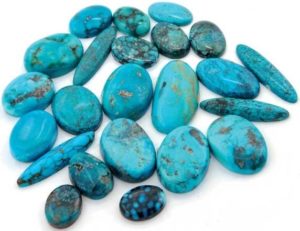
This includes all natural crystals in the form in which nature created them. Such minerals were not subjected to additional coloring or impregnation. For jewelry, only the highest quality specimens are selected, which have high hardness and strength. All that jewelers do with stone is just a little polished and cut. As a rule, it is a cabochon.
Of all the types of turquoise, this one is the most expensive. Therefore, if you want to purchase a natural stone found in nature, then you need to look only for jewelry with a high cost.
Reinforced (cemented) natural
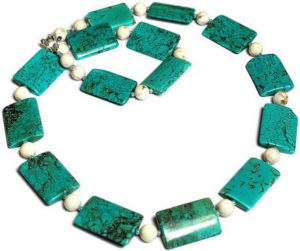
This turquoise is considered a medium quality stone. For her choose soft and porous gems. In order to preserve the qualities of the mineral for a long time, it is impregnated with special mixtures that strengthen the stone and make it more wear-resistant. In addition to strength, impregnations also contribute to the preservation of the shade of the gem. If natural turquoise can lose its color over time or due to any phenomena, then fortified turquoise will not change its shade, retaining its bright blue color for a long time.
In no case can this species be called a fake, because it was created from natural stone, albeit a slightly improved person. Are there any disadvantages to such an instance? I think no. In fact, the fact that the mineral will not lose its color, unlike natural, can hardly be put in minuses.
Ennobled natural
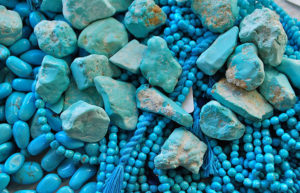
This kind of turquoise is the same as hardened stone. The only difference is that it is often artificially tinted to get a brighter and more saturated shade. At the same time, the gem retains its properties and structure. It is unlikely that it will be possible to distinguish such specimens from natural ones “by eye”. To do this, you will need to contact special centers where specialists will work with the mineral and make their verdict.
The only difference that can still “strike out” is an unnaturally bright blue tint. Such stones literally “burn”, thanks to special dyes. Again, such gems cannot be called a fake either, because real, natural turquoise was used to create them. In addition, they are made from high-grade minerals and are just as carefully tested for strength and quality.
Refurbished (pressed)
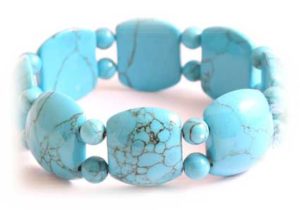
When processing natural stones, a kind of waste often remains. This is a small crumb or even dust that occurs during the refinement of a natural gem. It is this placer that becomes the material for creating a pressed mineral. It is collected, mixed with special compounds, pressed and processed. Also, low-quality turquoise, which is unsuitable for cutting or has very small sizes, can be used for this. They are also ground into powder, mixed with additives, pressed and whole pieces of the mineral are obtained.
Pressed stone is most often found on the shelves of jewelry stores. But even such specimens cannot be called artificial or fake. This is the same natural turquoise, which was simply improved in terms of performance and appearance.
Synthetic
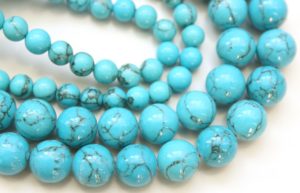
A synthetic specimen is a mineral grown in the laboratory. Only man controls the process and nature has nothing to do with it. An artificially grown gem has all the characteristics of a natural one, the only difference is in the origin. Crystal growth is controlled by laboratory workers and each stage is strictly monitored. At the same time, synthetic turquoise is often not colored additionally. Thanks to high technology, it is already possible to obtain a complete analogue of turquoise, from color to impurities, inclusions and structure.
What colors are turquoise
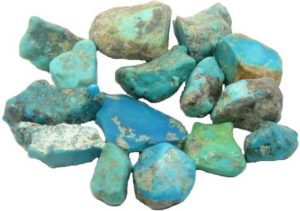
The color largely depends on the deposit. Contrary to popular belief that natural turquoise has a bright blue tint, it is worth noting that this is not the only color that the mineral can be dyed. There are also gems of white, green, brown, yellow and even brown shades.
The most common stone color is, of course, blue or simply turquoise. In addition, the characteristic stripes on turquoise can also differ in saturation and color. After all, in addition to black stripes on the stone, one can also distinguish green, blue, brown and white layering.
Leave a Reply